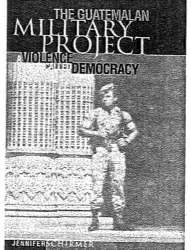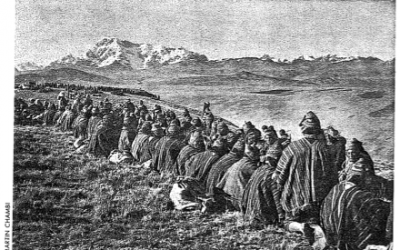Internet Commerce
Making it available for “The Rest of Us”
When you think about doing business over the Internet, you usually think about large enterprises like the popular online bookstore www.amazon.com , located in First World countries, with First World resources. However, despite obstacles, a “grassroots organization” approach to e-commerce may serve as a viable model in Latin America and elsewhere.
The rise of the Internet may serve to help Developing and newly industrialized countries countries expand their share of world trade, which most observers agree is crucial to their development. These countries might be able to piggyback on e-commerce technologies developed for First World markets, in order to break down traditional barriers like the high costs of design, distribution, marketing, and sales support, and use them to reach First world customers and investors.
Some developing countries may also be able to use the Internet to grab a larger share of the global computer software, hardware and services industry, taking advantage to the opportunity that Internet technology itself affords to decentralize operations and share know-how and management across borders. In addition, developing countries now have better information about First World goods and services. This should help them design better products, and reduce transactions costs.
However, this kind of “unmixed blessing” result is far from guaranteed. For Internet privatization and the rise of global e-commerce and finance also poses several serious problems to developing countries – problems that are unlikely to be solved by private profit-seeking alone.
Infrastructure Barriers
To begin with, many developing countries are finding that their existing telephone and computer networks are not adequate to support the mass deployment of quality Internet services, and that it is costly to upgrade their computers, higher speed wide-area “backbone” networks, and local access. In a period when “submerging markets” from Thailand and Indonesia to Korea, Russia and Brazil are experiencing profound economic crises, this kind of investment is often viewed as a luxury. This could cause them to slip farther behind. This is a cruel dilemma – just as the Internet revolution is arriving to permit increased global trade and openness, many of the key potential beneficiaries have been too smitten by other global economic forces to take advantage of it.
Government Barriers
A second challenge is posed by the fact that the widespread deployment of Internet services is viewed as a threat by government agencies in many developing countries, partly because the Internet provides a conduit for free speech and political opposition. However, governments also fear that online commerce may directly undermine government revenues and regulations in many other ways.
For example, in many countries, state-owned local telephone companies have tended to price long-distance and data communications services very high, as a kind of “luxury tax” on these services. The widespread use of the Internet for, say, international faxes or telephony will undermine these revenue sources.
Furthermore, many developing and newly industrialized countries governments also derive a large fraction of their revenues from value-added, customs, and sales taxes, and thus are unlikely to accept proposals not to tax Web commerce.
Technology Industry Barriers
The Internet, computer, and information services industries as a whole remain highly concentrated in a handful of First World countries, notwithstanding “decentralization” opportunities. Evidence to date suggests that these industries are subject to strong “network economies” and increasing returns. This is fancy economist jargon for the painful reality that winners tend to grow while losers fall even farther behind. Requisite skills are often concentrated in “seedbeds” like Silicon Valley and Route 128, and leading-edge customers also tend to be located in First World countries. Left to the free market’s own devices, the rise of the global Internet industry may only serve to widen the gap between rich and poor countries, and between rich and poor people within countries.
Local Skills and Organization
The Internet’s potential for global electronic commerce requires much on-the-ground education and training. The actual technical requirements for, say, rounding up digital pictures from a Guatemalan fabric cooperative and publishing them in an online catalogue are actually pretty trivial, compared with the “social costs” of training the cooperative to use computers and digital cameras, understand how they should approach First World customers, and meet the quality and delivery standards of such customers.
These barriers are formidable, especially the last one. But, as usual, something can be done if we concentrate on the “half full” aspect of the situation. One grassroots organization that I have recently been involved with, www. PEOPLink.org, provides an excellent example of just how much can be accomplished with a little bit of funding and a great deal of commitment and focus. PEOPLink, a non-profit Internet commerce venture that focuses on using the Internet to connect producer groups in developing countries with First World markets, was created in 1995 by Daniel Salcedo, a long-time community organizer in Central America and the US, with less than $500,000 of assistance from the MacArthur Foundation and the InfoDev group at the World Bank. Its goal is to help bring the powers of Internet commerce to the task of leveling the global trade playing field for poor artisans around the world. Toward that end, it has focused on creating a global network of artisans that uses Internet commerce to improve their terms of trade.
PEOPLink’s mission has special relevance for development because such artisans are usually drawn from the very poorest sectors of society. Most of them are women who live in remote rural settings, usually earning just a dollar or two a day. They use local materials to create products that are often a source of great pride and ethnic identity. Traditionally they were only able to market these products internationally as the first link at the end of a long chain of intermediaries who wound up paying them 10 cents on the retail dollar. Not surprisingly, many of them ended up migrating from their villages to capital cities to become car washers, waitresses, or worse. Along the way, of course, the fact that their work products changed hands so many times in the course of getting to market also made it impossible for them to take any credit for their work, brand it, or provide their customers with information about who created it and why.
PEOPLink has been working to change all this with the help of Internet technology and a great deal of organizing in the countries themselves. It has focused on developing “Trading Partners” in each country where it operates. Each of these organizations, in turn, represents thousands of local artisans. Currently there are Trading Partners in 14 countries, with 16 more expected to join this year. Each one gets a standard “toolkit” of digital and computer equipment, software and training procedures, permitting them to participate directly in Internet commerce, right from their home countries, without any intermediaries at all.
The toolkit fits in a backpack and costs about $2500. The training required to set up the connections has been designed for people with only a basic high school education and “no fear” when it comes to computers. Most of the training is also available on-line at www.peoplink.org/training, and is supported by e-mail-based counselors. Each Trading Partners develops the whole gamut of skills that are essential for Web marketing, beginning with simple computer emails and the use of digital cameras. In just a few months, they are able to prepare their own simple Web pages and upload them directly to their portion of the PEOPLink Web site, where their information is assembled into catalogues geared to both wholesale and retail distribution. (See http://www.peoplink.org/idiky for the Kuna link from Panamá, for example.)
Overall, this “grassroots organization” approach to e-commerce appears to be working very well – at least count, more than 300 products are being offered by Trading Partners at the PEOPLink site, and sales are taking off. The sales model benefits Trading Partners by paying them their normal prices plus half of the gross profit from not using intermediaries. Customers also are enriched by the amazing variety of new goods they can find, and by access to an abundance of cultural information about the “social origins” of their material objects. The artisans themselves not only like their higher sales prices, but also the fact that they now have control over their own images — after years of being bombarded by Western cultural heroes like Madonna and Michael Jackson, they are thrilled at being able to project their own cultural images on the global stage.
Admittedly, PEOPLink is just one tiny case example of grassroots development that takes advantage of the Internet. But it does show how, with lots of hard work and commitment, it is possible to revive some of the Web’s original “human development” purpose, and make it much more than just a platform for the enrichment, consumption, and entertainment of the already-provident. As we continue to develop exciting new electronic commerce applications for the “Information Highway, ” we have an obligation to make sure that the “rest of us” who have never even made a phone call are not left by the roadside.
For more information: www. PEOPLink.org
Winter 1999
James S. Henry, Managing Director of Sag Harbor Group, a computer technology consulting firm, has written widely about the problems of developing countries. A graduate of Harvard College (1972 A.B.), Harvard Law School (J.D., 1976), H.G.A.S (M.A., Economics, 1978), and a member of the New York Bar, he serves as a board member of PEOPLink. He can be reached at JHenry@shg.com. He gives his thanks to Dr. Dan Salcedo, Executive Director of PEOPLink for his invaluable inputs to this article (© James S. Henry 1999).
Related Articles
Linking Latin America
I have captured images of such seemingly disparate subjects as Mennonite immigrants to Mexico, Latina contestants for Selena standings, the Pope in Cuba, and traditional Sunday serenatas…
A Violence Called Democracy
As any journalist or diplomat who has spent time in Guatemala will attest, no group there is more difficult to penetrate than the Guatemalan Armed Forces. As much a caste as an institution, the…
Researching Latin America
The instant outpouring of Web information on the Pinochet case got me to thinking about communications on my first trip to Chile during the Allende presidency. I was armed for Ph.D…




